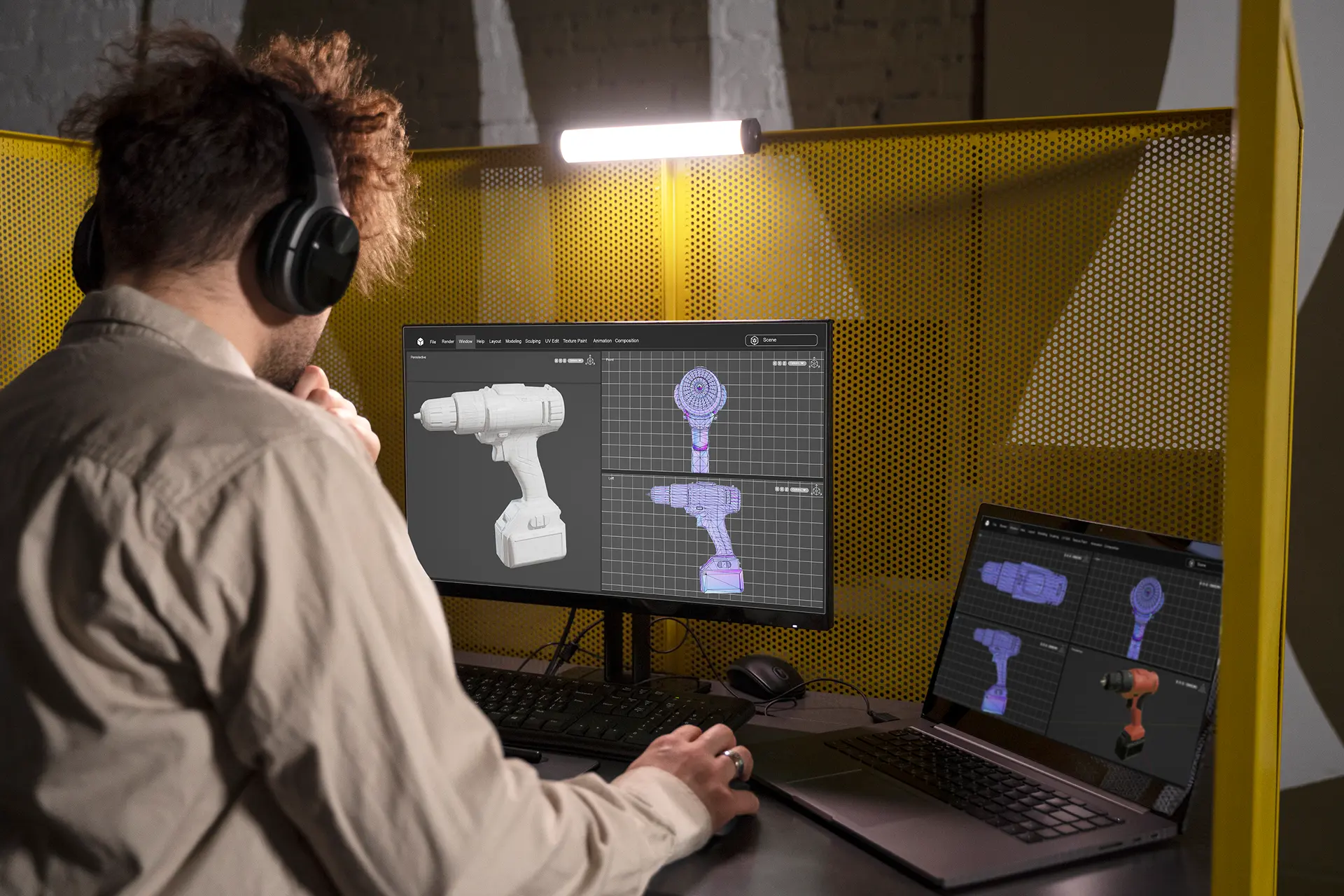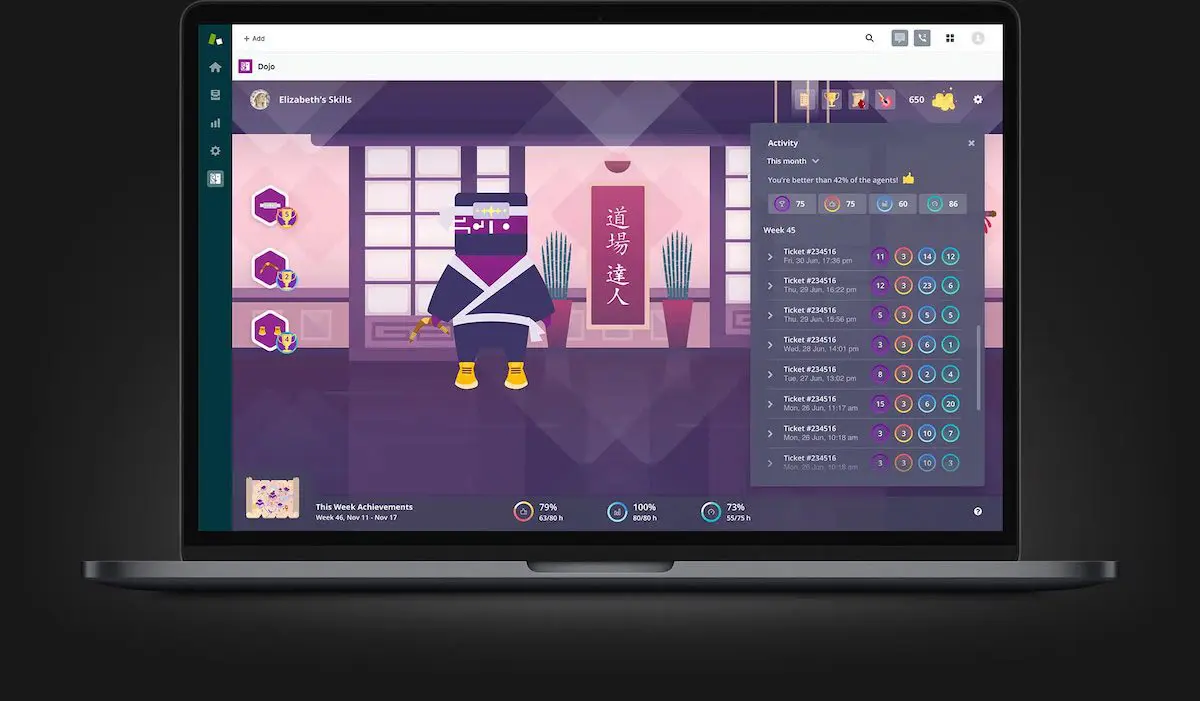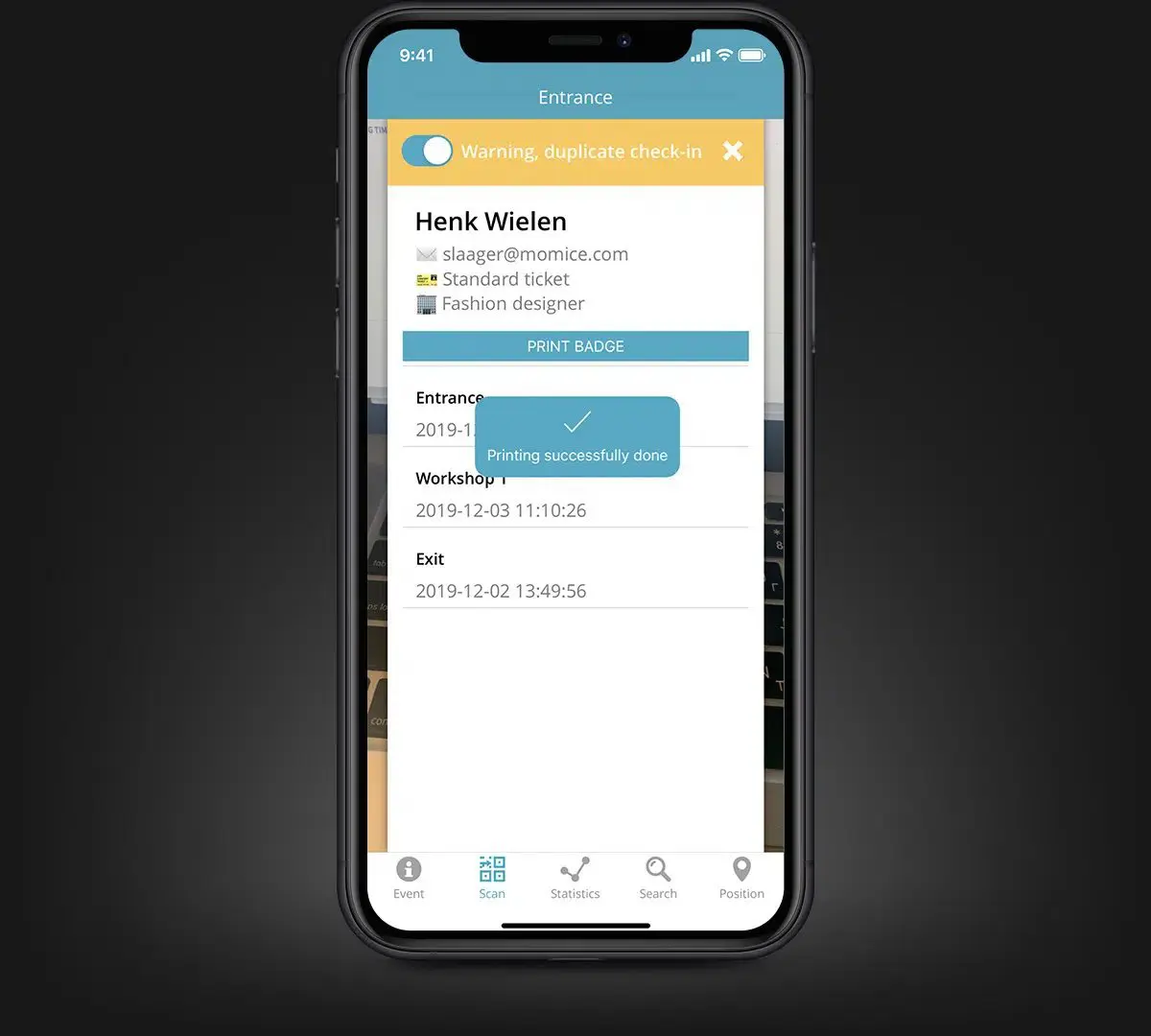Product Design and Development Services in the Netherlands: What to Know

Can you name an app that offers an intuitive interface, seamless accommodation search, and reservation, such as Booking.com? Right, you can’t. It’s one of the great examples of exceptional product design and execution. Every interaction with a platform feels personalized and tailored to your preferences. The app’s design is so polished that booking an apartment becomes a source of joy. And the secret component to such app triumph is the quality product design and development services a Dutch company successfully leveraged.
In today’s cutthroat product market in the Netherlands, where digital shelves overflow faster than ever, and competition is fierce, innovation is a must rather than a suggestion. In this light, product development services have become the tool companies turn to create digital products that stand out from the relentless churn quicker and with less effort. But what do software product design and development services entail? How can they benefit Dutch businesses, and whether do you need one? The answers to all your questions can be found in our guide.
What is Product Design?
Product design is the entire process from initial concept and ideation to the final product that 1) solves a user problem, 2) performs well within the targeted market, and 3) helps achieve business goals. Radical empathy and deep knowledge of the end-users (frustrations, behaviors, habits, desires) are the keys to successful product design. The ultimate win? A product so intuitive, so perfectly tailored to user needs, that it disappears into the background. Users just get stuff done seamlessly and effortlessly because brilliant design anticipates their every move.

Here’s a quick breakdown of what product design entails:
- User needs research. Product designers carry out research to learn about the target audience’s pain points, desires, and behaviors.
- Ideation. Once user needs are clear, designers explore creative solutions through sketches, prototypes, and user tests.
- Prototype creation and iteration. Rough models are built to test functionalities and user interactions to refine and improve the app.
- Visual design. The creation of the product’s visual language, namely user interface (UI) design for digital products and overall form and appearance for physical products.
- Usability testing. Products are tested with real users to detect usability issues, if any, and ensure a hassle-free and intuitive user experience (UX).
- Production and launch. Finally, the product is polished, manufactured (if physical) or coded (if digital), and launched to the market.
Key Principles of Product Design
If you follow the right product design principles, you can build worthwhile products that consumers are eager to purchase. A well-designed product creates value for users and drives demand due to the strong, unique selling points (USPs). Below, we share several core principles that guide successful product design:
- User-centered design: Originators should prioritize the user’s needs and experiences above all.
- Form follows function: The product’s design should be driven by its purpose and functionality, not just aesthetics.
- Simplicity and clarity: Users should easily grasp how to use the product.
- Iterative design: It must be a continuous process of testing, refinement, and improvement based on user feedback.
- Sustainability: Responsible product designers should consider the environmental impact of their creations throughout the lifecycle.
- Feasibility: A great product design must be manufacturable within time and budget limitations while maintaining high-quality standards.
- Brand Alignment: Product design must reflect the brand’s values, identity, and message.
Trends in Product Design
As we hurtle through 2024, here are some of the hottest trends that influence product design and development services worldwide and in the Netherlands in particular. You can use these product design trends, adapt them to your case, or let them spark your own ideas.
1. Sustainable Savvy
Eco-consciousness is no longer a niche concern. Consumers demand products that are built to last, use recycled or recyclable materials, and minimize their environmental impact. This translates to product design that prioritizes repairability, modularity, and energy efficiency.
2. User in Command
One-size-fits-all is a relic of the past. Users crave products that know their individual preferences. This trend is largely fueled by advancements in AI and machine learning, which allow for personalized interfaces, custom features, and on-demand experiences.
3. Augmented Reality (AR)
AR technology provides interactive experiences that overlay digital content in the natural environment. More and more often, AR is used in digital product design to boost user experiences. Today, there are a number of AR-powered apps from famous brands that let customers try on clothes virtually, visualize furniture placement in their homes, or receive repair instructions.
4. Embrace the Motion
Micro-interactions and subtle animations are current trends in mobile app UI design. Clearly, such elements will add engagement and delight to the user experience. Playful loading screens, delightful button transitions, and interactive elements that respond to user input are some examples of this trend.
5. Minimalism Reigns Supreme
Clean lines, uncluttered interfaces, and a focus on functionality still rule in digital product design and development services. Users appreciate products that are easy to understand and have a structured visual hierarchy that guides their interactions.
6. The Power of Storytelling
Successful products that are sold well are not just objects; they build emotional affection. The most effective way to do that is to tell a story. Good storytelling woven into the design process creates products that resonate with user values and build a deeper connection with the audience.
Overview of the Dutch Product Design and Development Sector
A well-established center for technology, the Netherlands is home to a number of startups, scaleups, and global brands like Booking.com, Unilever, and Heineken, to name a few. With near-universal internet access (99% internet penetration), massive and protected data centers, solid digital infrastructure, and a culture that embraces innovation, The Netherlands is one of the most technology-savvy countries worldwide.

Many well-known tech businesses (Tesla, Amazon, Uber, Netflix, and others) chose the Netherlands to extend their development teams and global presence. The country’s software product design and development services sector is at a high level. Let’s look at this prolific Dutch industry more closely.
Major Industry Players in the Netherlands
The Netherlands’ design firms are well-known for their inventive and imaginative approach to design. Here are profiles of a few key Dutch software design firms and how they influence the industry.
- UXPin, an Amsterdam-based company, offers one of the most popular prototyping and design collaboration tools used by thousands of design teams globally. Their platform lets designers and developers easily collaborate on projects and avoid any sort of miscommunication, as everyone can see the design progress and who works on what. It greatly simplifies the workflow and adds transparency to the process. In short, it’s one of the most in-demand design firms in the Netherlands.
- DEPT is an award-winning agency that, in addition to software design, can offer full-stack digital strategies. DEPT tackles the most complex design challenges always with a user-centric approach in mind. Yet, visually attractive interfaces are not the only strength of this company. Data-driven solutions that deliver measurable business results are also their expertise.
- Valtech. With a global presence and a strong foothold in the Netherlands, Valtech is a top-notch design and development company. Their expertise in technology, design, and marketing lets them create smooth digital experiences and software of the highest standards. They also follow the latest tech trends and employ AI along with blockchain and IoT to build future-proof solutions that meet the needs of modern businesses.
Technology and Innovation in Dutch Product Design
Dutch design firms are active adopters of advanced technologies and have seamlessly integrated them into their software development processes. Some key technologies that rule the game in the Dutch product design and development services sector are:
- 3D printing
The creation of prototypes has become faster and more affordable thanks to 3D printers. Instead of waiting weeks for traditional prototypes – 3D printers let designers churn out multiple iterations in record time. Companies can physically validate their design ideas and identify potential issues before they become expensive roadblocks. It’s like a built-in “what if?” button that keeps the design process moving smoother and way quicker.

- Artificial Intelligence (AI)
The much-talked-about AI technology has seen widespread adoption in the product design sphere. The key value designers see in AI tools is automated tasks (material selection, user behavior analysis, and others), which take most of the designers’ time. User experience personalization and design optimization are additional benefits that make AI usage more attractive among professional product design companies. Due to these AI capabilities, it’s widely used to do user research, analyze data, customize products, create design deliverables, test products, and more.
The Product Development Process in the Dutch Context
The product development process in the Netherlands blends innovation, efficiency, and user-centered design. Dutch companies know how to turn creative ideas into practical solutions as well as how to leverage technologies and a collaborative approach. To have a general idea of what the development part of the product creation involves, we outlined the key stages and practices involved in custom software development services in the Netherlands.
Conceptualization and Design
There are several methods of product conceptualization and design companies apply based on the project type and requirements. However, in the Netherlands, UI/UX design services are all about putting the user at the forefront or using the so-called user-centered design (UCD).

1. Deep User Empathy. Extensive user research is the cornerstone. Dutch designers begin with user interviews and surveys to truly understand user needs, frustrations, and aspirations. This radical empathy allows them to design products that solve real problems and resonate deeply on an emotional level.
2. Brainstorming and Collaboration. Ideas are born through a collaborative process. Designers and engineers come together in a creative free-for-all. Dutch companies generally follow an iterative approach, so they sketch, create rapid prototypes, and test user feedback continuously to refine and improve the initial ideas.
3. Aesthetics with Purpose. Dutch design is known for its clean lines and minimalist aesthetic. However, form always follows function. Every design decision is made with the user experience in mind.
4. The Power of Storytelling. Software development companies in the Netherlands have mastered and successfully weave narratives around their products. They understand that a well-told story can connect with users on an emotional level and create a sense of desire for the product.
Prototype Development
Once the designs are ready, any software product development agency will move to the prototype creation. Here’s how Dutch companies turn concepts into tangible realities:
Tech Arsenal. Most companies use state-of-the-art tools to build prototypes. From ubiquitous 3D printers that churn out physical models in record time to advanced virtual reality (VR) setups that allow for immersive user testing, these technologies enable designers to quickly iterate and refine their ideas.
Sustainability in Focus. The Dutch are not only a tech-savvy nation, they’re also eco-conscious. That’s why sustainable development practices gain traction. Some popular practices are the usage of recyclable materials for 3D printers, low-energy prototyping techniques, and waste minimization throughout the process. Dutch companies understand that innovation shouldn’t come at the expense of the environment.
Market Testing and Launch
The final stage of product development Dutch companies approach with a focus on precision and quality. Here’s how they ensure that their products are market-ready:
Data-Driven Decisions. Dutch companies are big believers in data. They leverage user research data from the conceptualization stage, combined with A/B tests and analytics tools, to inform their market testing strategies. This information helps them refine features, identify potential target markets, and even predict user behavior.
Beta Testing. It is common practice to invite a wider group of potential users to beta test. This provides broader feedback on features, usability, and overall market fit. Beta testers can be recruited through online communities, social media campaigns, or partnerships with relevant organizations.
Soft Launch Strategies. Dutch firms might utilize a “soft launch” for specific regions or targeted demographics. They use this strategy to test the product in a controlled environment and fix any issues before a full-scale global launch.
Continuous Improvement is a standard part of product design and development services tech companies in the Netherlands typically offer. They use market feedback throughout the process and after launch to continuously improve their products and ensure long-term success.
Outsourcing Product Design and Development in the Netherlands
Software development outsourcing is a decision that many companies face when they need to scale their in-house teams or build a product fast. If you select outsourcing as your strategy, your options for tech partners broaden to a global scale. Yet, it certainly doesn’t simplify your choice of the destination (local, nearshore, or offshore) and potentially the best product design company. That’s why a cost and benefits comparison of local and international options will give you a better idea of where to start your searches.
Local Outsourcing in the Netherlands
Pros:
- Proximity. Collaboration with local firms allows for easier communication and cooperation. Face-to-face meetings and on-site visits enhance understanding and foster stronger partnerships.
- High-Quality Standards. Dutch companies are known for their careful attention to detail and adherence to high-quality standards.
- Cultural Alignment. There is a cultural and business practice alignment that can streamline processes and reduce misunderstandings.
Cons:
- Higher Expenses. Local outsourced digital product design and development services can be more expensive due to higher labor costs and operational expenses.
- Limited Resource Pool. Finding the right professionals under conditions of shortage of technically skilled talent remains the biggest challenge for Dutch companies. And if we compare the local pool to international options, it will be much more limited.
International Outsourcing
Pros:
- Cost Efficiency. When you outsource abroad, for example, Eastern Europe, especially to destinations like Ukraine or Poland, you can reduce the costs of product design and development. Due to lower labor and operational costs, you can hire remote software developers at more pleasant rates than you could find in the Netherlands or Western European countries. At the same time, their experience and skills compare favorably in strength to Dutch developers.
- Access to a Larger Talent Pool. Countries in Eastern Europe like Ukraine have a vast pool of skilled developers and designers as well as niche experts that might be scarce locally. By the way, that’s one of the reasons why Ukraine is a great outsourcing destination.
- Flexibility and Scalability. International firms often offer greater flexibility in scaling teams up or down based on project needs, which can be crucial for dynamic project requirements.
Cons:
- Communication Challenges. Time zone differences and language barriers can complicate communication and project management if not properly handled.
- Quality Control. Consistently ensuring quality standards when your design and development team works across borders can be difficult. It requires solid management and oversight from your side to align international teams with project goals and quality expectations.
Our Case Studies of Successful Product Development in the Netherlands
Delivering IT outsourcing services globally for over 10 years, we’ve established a strong presence in the Western European software development market, with the Netherlands being one of the key hubs. Our collaborations with Dutch clients have produced remarkable results. Here are a few examples that showcase our experience, competency, and teamwork in action:
Customer Support Gamification for Kaizo: We partnered with Kaizo, a company developing a cloud-based platform that boosts the performance of support teams. Our team helped transform their initial concept into a first-of-its-kind gamified platform with custom UI elements and illustrations. Due to gamification elements and new features we introduced, we drastically enhanced the productivity of their support teams.

Event Management App for Momice: Momice approached us with the challenge of the creation of a user-friendly platform that will help event organizers handle some management tasks, which demand a lot of effort when done manually. As a result, our team developed native iOS and Android apps with seamless interfaces that let event managers check guests in for events through a QR code scanner, track attendance, and access post-event analytics.

Rental Platform for Bidly: Bidly needed to build an automated rental payment system that will connect landlords and tenants. Using trending material design elements, we successfully rebuilt the existing platform and delivered a solution that modernizes property management and makes leasing transactions seamless and reliable.

Outsource your Product Development to Relevant
At Relevant, we believe that the key factors in software product design and development services are people, processes, and technology—in exactly that order. Communication has become so essential that now it’s a key success factor, no matter where we are globally. Today, software development outsourcing plays a bigger role than just keeping costs down. For some Dutch organizations, it’s the only way to get the software they need.
We’re an IT outsourcing services company with a decent knowledge of the Dutch market’s specific challenges and opportunities and a strong commitment to helping companies innovate through quality software. If you seek product design and development services in the Netherlands and a team dedicated to your success, contact us.



